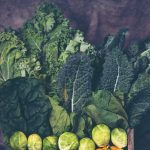Then said Almitra, Speak to us of Love.
And he raised his head and looked upon
the people, and there fell a stillness upon
them. And with a great voice he said:
When love beckons to you, follow him,
Though his ways are hard and steep.
And when his wings enfold you yield to him,
Though the sword hidden among his
pinions may wound you.
And when he speaks to you believe in him,
Though his voice may shatter your dreams
as the north wind lays waste the garden.
For even as love crowns you so shall he
crucify you. Even as he is for your growth
so is he for your pruning.
Even as he ascends to your height and
caresses your tenderest branches that quiver
in the sun,
So shall he descend to your roots and
shake them in their clinging to the earth.
•
Like sheaves of corn he gathers you unto
himself.
He threshes you to make you naked.
He sifts you to free you from your husks.
He grinds you to whiteness.
He kneads you until you are pliant;
And then he assigns you to his sacred
fire, that you may become sacred bread for
God’s sacred feast.
All these things shall love do unto you
that you may know the secrets of your
heart, and in that knowledge become a
fragment of Life’s heart.
But if in your fear you would seek only
love’s peace and love’s pleasure,
Then it is better for you that you cover
your nakedness and pass out of love’s
threshing-floor,
Into the seasonless world where you
shall laugh, but not all of your laughter,
and weep, but not all of your tears.
•
Love gives naught but itself and takes
naught but from itself.
Love possesses not nor would it be
possessed;
For love is sufficient unto love.
When you love you should not say,
“God is in my heart,” but rather, “I am
in the heart of God.”
And think not you can direct the course
of love, for love, if it finds you worthy,
directs your course.
Love has no other desire but to fulfil
itself.
But if you love and must needs have
desires, let these be your desires:
To melt and be like a running brook
that sings its melody to the night.
To know the pain of too much tenderness.
To be wounded by your own under-
standing of love;
And to bleed willingly and joyfully.
To wake at dawn with a winged heart
and give thanks for another day of loving;
To rest at the noon hour and meditate
love’s ecstasy;
To return home at eventide with gratitude;
And then to sleep with a prayer for the
beloved in your heart and a song of praise
upon your lips.
Kahlil Gibran’s poem “On Love” is a profound exploration of the complexities and transformative power of love. In this poem, the prophet Almustafa responds to a request to speak about love. He imparts his wisdom on the nature of love, its demands, and its ultimate purpose. The poem is rich in metaphor and symbolism, inviting readers to delve deeply into its layers of meaning. In this analysis, we will break down the poem stanza by stanza, exploring its themes, metaphors, and philosophical insights.
Stanza 1: “Then said Almitra, Speak to us of Love. And he raised his head and looked upon the people, and there fell a stillness upon them. And with a great voice he said:”
The poem begins with Almitra, a character who often serves as a listener and questioner in Gibran’s work, asking Almustafa (the Prophet) to speak about love. Almustafa, who possesses wisdom and insight, agrees to share his thoughts on this profound subject. The stillness that falls upon the people signifies the reverence and anticipation surrounding his words.
Stanza 2: “When love beckons to you, follow him, Though his ways are hard and steep. And when his wings enfold you yield to him, Though the sword hidden among his pinions may wound you. And when he speaks to you believe in him, Though his voice may shatter your dreams as the north wind lays waste the garden.”
Here, Almustafa advises that when love calls, one should follow, even if love’s path is challenging and steep. Love’s embrace might hurt or wound, but one should still yield to it. Love’s words might shatter dreams, much like the harsh north wind can devastate a garden. This stanza emphasizes the idea that love is not always gentle or easy; it can be tumultuous and disruptive.
Stanza 3: “For even as love crowns you so shall he crucify you. Even as he is for your growth so is he for your pruning. Even as he ascends to your height and caresses your tenderest branches that quiver in the sun, So shall he descend to your roots and shake them in their clinging to the earth.”
Here, Almustafa compares love to both a crown and a crucifixion, suggesting that it can elevate and humble a person simultaneously. Love is described as a force that nurtures growth but also necessitates pruning. It touches the heights of one’s being and the depths of their roots, challenging their attachment to the material world.
Stanza 4: “Like sheaves of corn he gathers you unto himself He threshes you to make your naked. He sifts you to free you from your husks. He grinds you to whiteness. He kneads you until you are pliant; And then he assigns you to his sacred fire, that you may become sacred bread for God’s sacred feast.”
In this stanza, love is depicted as a farmer harvesting and processing wheat. Love gathers individuals like sheaves of corn and then subjects them to a series of transformative experiences: threshing, sifting, grinding, and kneading. These actions symbolize the process of refining and purifying the soul. The end result is that individuals become sacred offerings for a divine purpose, akin to becoming “sacred bread” for God’s feast. This underscores the idea that love is a transformative and spiritually enriching force.
Stanza 5: “All these things shall love do unto you that you may know the secrets of your heart, and in that knowledge become a fragment of Life’s heart.”
Here, Almustafa explains that the trials and tribulations imposed by love are meant to reveal the secrets of one’s heart. Through these experiences, individuals gain self-awareness and become connected to the greater “heart” of life itself. Love, in its transformative nature, helps individuals discover their true selves and their place in the broader tapestry of existence.
Stanza 6: “But if in your heart you would seek only love’s peace and love’s pleasure, Then it is better for you that you cover your nakedness and pass out of love’s threshing-floor, Into the seasonless world where you shall laugh, but not all of your laughter, and weep, but not all of your tears.”
This stanza advises that if one seeks only the tranquil and pleasurable aspects of love and wishes to avoid its challenges and transformations, it is better to retreat from love’s threshing-floor. The “seasonless world” represents a realm of emotional and spiritual stagnation where one experiences only partial joy and partial sorrow. This passage underscores the idea that genuine love requires a willingness to embrace both its joys and its pains.
Stanza 7: “Love gives naught but itself and takes naught but from itself. Love possesses not nor would it be possessed; For love is sufficient unto love.”
Here, Almustafa explains that love is self-sustaining and self-giving. Love is not concerned with ownership or possession; it simply exists to express itself. Love, in its pure form, is self-sufficient and doesn’t seek anything beyond the act of loving. This stanza emphasizes the unselfish and altruistic nature of true love.
Stanza 8: “When you love you should not say, “God is in my heart,” but rather, “I am in the heart of God.” And think not you can direct the course of love, for love, if it finds you worthy, directs your course.”
In this stanza, Almustafa urges that when one loves, they should not claim that God resides within them. Instead, they should acknowledge that they are within the heart of God. This implies a sense of humility and recognition of the divine nature of love. Furthermore, Almustafa emphasizes that love cannot be controlled or directed by human will. Instead, if one is deemed worthy, love itself guides and shapes the course of their life.
Stanza 9: “Love has no other desire but to fulfill itself. But if you love and must needs have desires, let these be your desires: To melt and be like a running brook that sings its melody to the night. To know the pain of too much tenderness. To be wounded by your own understanding of love; And to bleed willingly and joyfully.”
Here, Almustafa clarifies that love’s primary purpose is to fulfill itself, indicating that love seeks its own expression and realization. However, if one must have desires related to love, they should aspire to be like a flowing brook that sings in the night—a symbol of harmonious and joyful expression. They should also seek to understand and experience the pain that can come from excessive tenderness and sensitivity. Additionally, they should be willing to be wounded by their own deep understanding of love and be prepared to bleed joyfully, signifying a willingness to endure love’s trials and tribulations.
Stanza 10: “To wake at dawn with a winged heart and give thanks for another day of loving; To rest at the noon hour and meditate love’s ecstasy; To return home at eventide with gratitude; And then to sleep with a prayer for the beloved in your heart and a song of praise upon your lips.”
In the final stanza, Almustafa describes the ideal state of being in love. It involves waking up with a heart filled with joy and gratitude for another day of loving. It includes moments of reflection and meditation on love’s ecstasy during the day. At the end of the day, there should be a return home with a heart full of gratitude. The poem concludes with the idea that one should sleep with a prayer for their beloved and a song of praise on their lips, signifying the enduring and continuous nature of love’s expression.
In conclusion, Kahlil Gibran’s poem “On Love” is a profound exploration of love’s multifaceted nature. It portrays love as both a source of joy and pain, a force of transformation, and a connection to the divine. Through rich metaphors and symbolism, the poem imparts wisdom on how to embrace and understand love in all its complexity. It encourages readers to not only seek the pleasures of love but also to accept its challenges and transformations, for it is in the journey of love that one truly discovers the secrets of the heart and their place in the grand tapestry of existence.
FAQs About Kahlil Gibran’s Poem “On Love”
- What is the central theme of Kahlil Gibran’s poem “On Love”?
The central theme of the poem is the multifaceted nature of love, emphasizing its transformative power and the need to embrace both its joys and challenges.
- Who is Almitra, and why does she request Almustafa to speak about love?
Almitra is a character in Gibran’s work who asks Almustafa (the Prophet) to speak about love. She serves as a listener and questioner, and her request sets the poem in motion.
- What does the stillness that falls upon the people in the poem symbolize?
The stillness that descends upon the people symbolizes the reverence and anticipation surrounding Almustafa’s words, signifying the importance of the topic.
- How does the poem describe the nature of love’s call and its challenges?
The poem suggests that love’s call can be demanding and difficult to follow, often leading to both joy and pain. Love’s path is described as steep and its embrace may hurt, but one should yield to it nonetheless.
- What do the metaphors of the sword hidden among love’s pinions and the north wind symbolize?
These metaphors signify that love can be both protective and destructive. Love may wound or challenge individuals in ways they don’t expect, just as the north wind can devastate a garden.
- What is the significance of comparing love to both a crown and a crucifixion in the poem?
This comparison illustrates that love can elevate and humble individuals simultaneously. It’s a transformative force that nurtures growth but also demands pruning and self-sacrifice.
- How does the poem depict the transformative process of love?
Love is likened to a farmer’s actions on wheat, including gathering, threshing, sifting, grinding, and kneading. These actions symbolize the refining and purifying process that love subjects individuals to, ultimately making them sacred.
- What does the phrase “sacred bread for God’s sacred feast” signify?
This phrase emphasizes that the transformative process of love prepares individuals to serve a divine purpose, contributing to a larger, sacred experience.
- What is the connection between love, self-discovery, and becoming a fragment of Life’s heart?
Love’s trials and challenges lead to self-discovery, allowing individuals to understand their innermost secrets. This understanding connects them to the broader “heart” of life itself.
- What does the poem suggest about those who seek only the pleasurable aspects of love?
It advises that those who seek only love’s peace and pleasure without embracing its challenges may exist in a “seasonless world” of partial emotions and experiences.
- What is the significance of the statement, “Love gives naught but itself and takes naught but from itself”?
This statement underscores the self-sufficiency and altruistic nature of genuine love. Love is not concerned with possession or gain; it exists purely to express itself.
- What does Almustafa mean when he says, “I am in the heart of God”?
This phrase reflects a sense of humility and recognition that one is part of a larger, divine love. It emphasizes the idea that love transcends individual egos.
- How does the poem convey the idea that love cannot be controlled or directed?
It suggests that love, if it finds an individual worthy, will guide and shape their life’s course. Love is depicted as an autonomous force that acts upon individuals.
- What is the significance of aspiring to “melt and be like a running brook that sings its melody to the night”?
This aspiration signifies a desire for harmonious and joyful expression of love, akin to the natural flow of a brook’s music.
- What is meant by “the pain of too much tenderness” in the poem?
This phrase refers to the idea that love can be so profound and tender that it may bring emotional pain or vulnerability, but it is a valuable aspect of love’s experience.
- Why should one be willing to be wounded by their own understanding of love, according to the poem?
Being wounded by one’s own understanding of love suggests a willingness to endure the challenges and sacrifices that come with love, embracing its transformative power.
- How does the poem describe the ideal state of being in love at different times of the day?
It paints a picture of waking with gratitude, meditating on love’s ecstasy, returning home with gratitude, and ending the day with a prayer for the beloved and a song of praise.
- What does the poem convey about the continuous and enduring nature of love?
The poem suggests that love is an ongoing journey and experience, something that should be embraced and celebrated at all times of the day.
- What message does the poem ultimately convey about the nature and purpose of love?
The poem emphasizes that love is a transformative force that leads to self-discovery and connection to the divine. It encourages embracing love in all its facets, including its challenges, as a path to greater understanding and fulfillment.
- How does Kahlil Gibran use metaphors and symbolism throughout the poem to convey his message about love?
Throughout the poem, Gibran uses metaphors like the farmer and the wheat, the crown and crucifixion, and the running brook to symbolize different aspects of love’s nature and its impact on individuals. These metaphors add depth and layers of meaning to the poem, inviting readers to explore and contemplate the profound themes of love and transformation.






